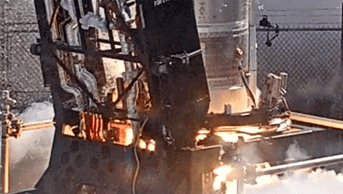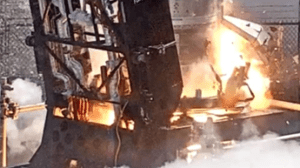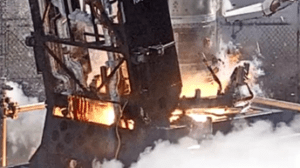At Astra, learning is a core value and integral part of our culture. This blog series is intended to share our approach to solving tough problems and the lessons we have learned, in an effort to contribute to our industry as we and others continue to push towards the stars. Ad Astra!
By Benjamin Lyon, EVP and Chief Engineer
In late August 2021, after some updates to Astra’s Rocket 3 series, we launched Launch Vehicle 0006 (LV0006). We hoped to reach orbit, but a propellant leakage at liftoff led to the shutdown of one of the rocket’s engines, which caused the rocket to tip slightly sideways at liftoff, before correcting course. The flight was terminated after two and a half minutes. Astra conducted an investigation in collaboration with the Federal Aviation Administration (FAA), and now we are sharing what we’ve learned to date. Ultimately, the engine abort taught us a lot about how well our guidance, navigation, and control (GNC) is working, and gave us insight into some fixes.
What happened:
The issue we encountered was something we hadn’t seen before. Leading up to liftoff, the first stage propellant distribution system provides the rocket with fuel and oxidizer. We designed the system to quickly disconnect and seal when the rocket lifts off. On this launch, propellants leaked from the system, mixed, and became trapped in an enclosed space beneath the interface between the rocket and the launcher. Those propellants were ignited by the engine exhaust, causing an over-pressure event that severed the connection to the electronics that control the fuel pump, shutting down the engine less than one second after liftoff.
This is why the rocket hovered until it could take off with only four engines producing thrust. The vehicle then returned to a normal trajectory, passing through max-Q. After that point, the four remaining engines did not have sufficient power to enable the vehicle to make orbit.



What we learned:
Learning is one of our core values at Astra, and one of the big reminders from this launch is that issues that haven’t shown up in previous launches can still show up in future launches. It also reinforces how important it is to test as you fly. One thing we will continue to do for our launches is to evaluate risk not just through empirical testing, but also through theorizing how a rocket might behave in unexpected ways.
We also were able to validate modifications we had made to LV0006 based on our learnings from the December 15, 2020 launch of Rocket 3.2. During that launch, an issue with propellant mixture management prevented us from getting to orbit. One of the key updates we made to LV0006 was to implement closed-loop control of propellants, so that we would not end up with excess residual propellant. In the August 2021 launch, the rocket performed as expected on this front. After the December 2020 launch, we also made several updates to guidance and navigation code and algorithms and that was on full display in this launch when the rocket course-corrected after tipping sideways, making us all very happy with our GNC. We also got a tremendous amount of thermal and acoustic data from the sensors on the rocket. That is phenomenal learning that we’ll be able to apply to the next launch.

How we fixed it:
After studying the data from our investigation, we’ve taken several steps to mitigate these issues for LV0007. First, we adjusted the design to move the locations of the rocket-to-launcher interfaces so that two propellants, should they leak, will no longer mix. On top of that, we’ve modified and re-qualified the propellant supply mechanism to minimize fuel leakage and also removed the cover to eliminate the confined space problem. We’ve also improved our verification processes for both design and operations. Together, we believe these changes significantly reduce the likelihood of seeing a similar event in the future.

I’m proud of the team and their resilience as we continue to launch and learn. We are working hard to get ready for our next launch from Kodiak, Alaska. We hope you’ll join us and NASASpaceflight for the next livestream at astra.com/livestream, and follow us on Twitter @astra for updates. Ad Astra!
